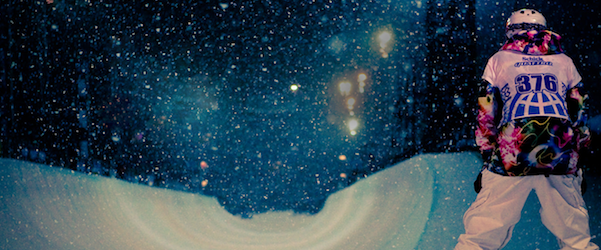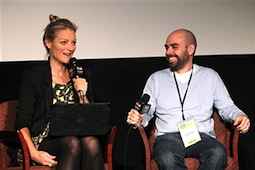Inside the Editing Room with Lucy Walker

Documentarian Lucy Walker is a filmmaker worth keeping an eye on, mainly because she’s made some of the most provocative, inspiring work in recent years—2010’s Waste Land and 2011’s The Tsunami and the Cherry Blossom were both nominated for Academy Awards—but also because she’s given a great deal of thought to the processes that work for her and she’s more than willing to share her best strategies with her peers.

At last month’s Film Independent Forum, Walker, along with her editor Pedro Kos, shared clips from their latest collaboration, The Crash Reel, the dramatic story of snowboard champion Kevin Pearce that exposes the life-and-death danger of extreme sports, which aired on HBO and opens in theaters December 13. The duo offered filmmakers a whole host of ideas for processes to make doc making—and especially editing—more efficient and effective, and less headachey.
Here are the highlights:
Try the cocktail party litmus test.
When Walker is developing a project, she’ll describe the story whenever she has the opportunity. Seeing someone’s eyes glaze over during cocktail party small talk might mean your characters and their story may not be as thrilling to audiences as it is to you.
Stay organized!
Walker has a finely honed system of color-coded index cards representing each scene and flags that she and TK use in the editing room to plot the story’s arc and provide Kos with a road map. Arranging cards is the first step in the 5-step sequence she swears by: 1. Index cards. 2. Edit. 3. Screen. 4. Feedback. 5. Break. Repeating that sequence over and over and over again is the process Walker uses for taking films, as she puts it, “from terrible to good to great to excellent to phenomenal.”
Build your story around memorable moments.
At the end of shooting, one of Walker’s starting points for identifying the storyline is to sit with Kos and, from memory, list the moments that stand out the most. “You will have instinctively remembered all the important bits,” she says.
Delay the talking head.
Noting that the standard documentary format starts with “the glorious visual opening” followed eventually by “the clumsy talking head” Walker says over time she’s observed that “the longer you can wait before that first clumsy talking head, the better the movie.”
Know when to say when.
After gathering hundreds of hours of footage and spending countless days and nights in the editing room, filmmakers often struggle most with knowing when to stop adding scenes. The perfect length for a film, says Walker: “15 seconds short of boring.”
Don’t fear the rough cut.
“If you don’t want to kill yourself when you see a rough cut,” says Walker, ”you’re not normal.”
By Pamela Miller / Website & Grants Manager